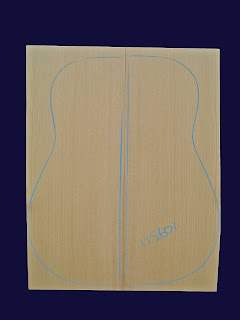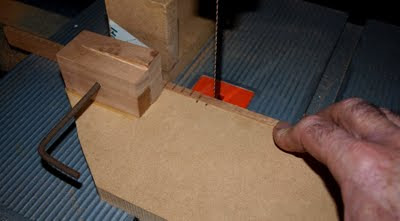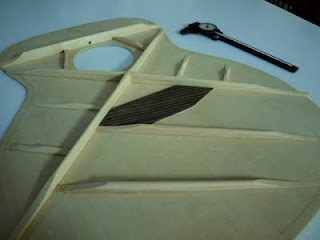I have a love/hate relationship with our strong Australian dollar at present. It's too convenient an excuse to click the "Buy Now" button when I spot particularly desirable pieces of wood on favourite web sites such as Allied Lutherie's but, of course, it's also of benefit once I've given in to temptation. Resistance is futile, it would seem.
Ample evidence of my recent weakness can be seen below. Those poor souls similarly afflicted with "Wood Acquisition Syndrome" can click the pictures for a closer look.
Ample evidence of my recent weakness can be seen below. Those poor souls similarly afflicted with "Wood Acquisition Syndrome" can click the pictures for a closer look.
|
|
European Spruce needs no introduction, but Port Orford Cedar is a relatively uncommon tonewood. Luthier's Mercantile has this to say about it:
Similar in appearance and scent to Alaskan Yellow Cedar, Port Orford Cedar is stiffer, lighter and thus more suitable for soundboards. Indeed, it is highly sought after for the bold, robust, responsive tone that it imparts on an instrument. It is very even textured, with a slight golden-white color and tight, even grain. A great advantage to the builder is that this wood is more immune to splitting than absolutely any other soundboard wood.
Similar in appearance and scent to Alaskan Yellow Cedar, Port Orford Cedar is stiffer, lighter and thus more suitable for soundboards. Indeed, it is highly sought after for the bold, robust, responsive tone that it imparts on an instrument. It is very even textured, with a slight golden-white color and tight, even grain. A great advantage to the builder is that this wood is more immune to splitting than absolutely any other soundboard wood.
The Port Orford Cedar is in transit as I write this and I'm impatient to inspect it, flex it, tap it - and smell it! Aside from its promised tonal and structural advantages, I'm looking forward to experiencing the pungent peppery smell it's said to impart to a completed instrument. It's almost worth combining it with a back and side set of Claro Walnut for that reason alone given walnut's delicious aroma. Such an instrument would surely be the ultimate "perfumed guitar"!
Useful links:
Port Ordford Cedar - Stansell Guitars
Pete
















